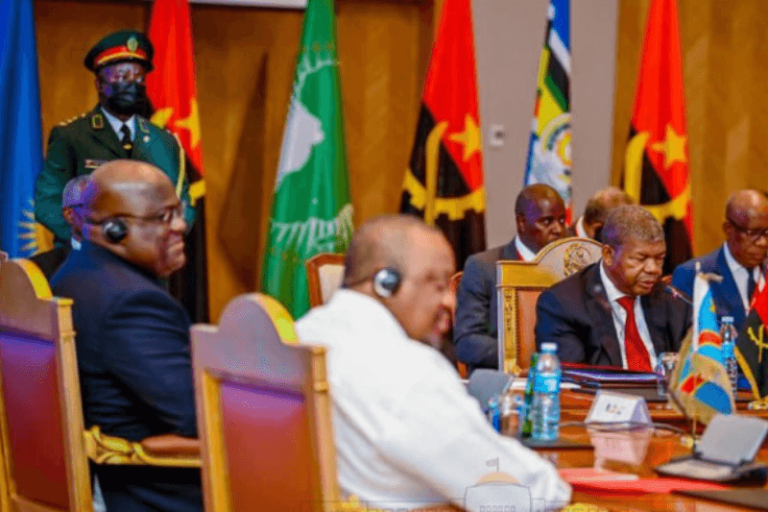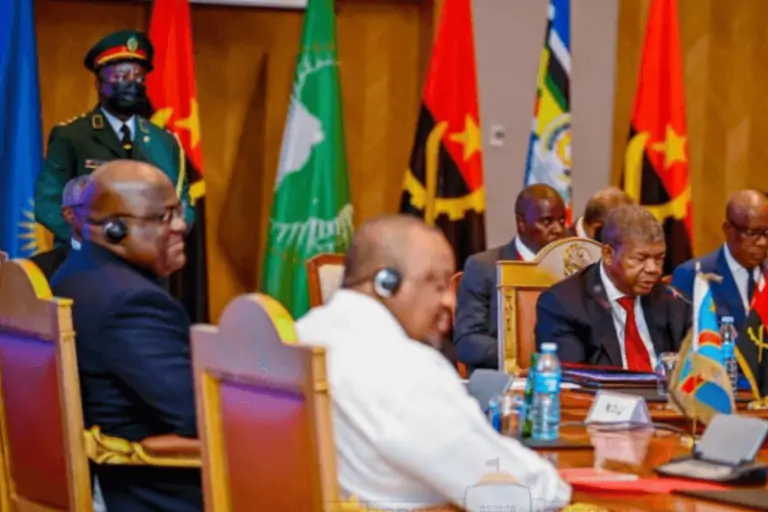

angola declares ceasefire deal between drc and rwanda
Tuesday Angola declared a ceasefire between Rwanda and the Democratic Republic of Congo (DRC). The agreement centers on a meeting between the DRC sponsored by Angolan President Joao Lourenco at the presidential palace in Luanda between the foreign ministers of Rwanda and the DRC.
Rwanda disputes Kinshasa’s persistent accusations of Kigali supporting M23 rebels battling the army in eastern North Kivu region. According to a UN Security Council investigation, Kigali had “de facto control” of the M23 and 3,000 to 4,000 Rwandan troops have been fighting alongside it. Due to expire as a partially recognized humanitarian truce between the M23 and government forces ends, this latest stoppage of hostilities is scheduled to take effect midnight on August 4.
Which sides have agreed to down their arms is not yet obvious. The declaration left out whether the agreement included all the sides engaged in the conflict, including foreign insurgent organizations and local militias as well as Still, the ceasefire represents a major diplomatic attempt to bring a decades-violence-torn area under control.
Fighting both local and foreign-based armed groups, notably M23 rebels, the mineral-rich east of the DRC has been rocked for some thirty years. The United Nations estimates that fighting in the province has displaced over 1.7 million people; however, the total number of displaced persons in the nation from several conflicts is over 7 million. The abundance of minerals including tin, tantalum, and tungsten in the area has driven the war since different groups fight for control of these resources.
The continuous violence has had a serious humanitarian effect; many people suffer from lack of stability and access to necessary services. The truce seeks to offer a break from the violence, therefore allowing humanitarian relief to reach those in need and allowing displaced people to contemplate going back to their homes.
Emphasizing the need of keeping an eye on and guaranteeing all sides follow the deal, foreign monitors have gently welcomed the ceasefire announcement. Angola’s mediation symbolizes the larger regional effort to resolve the Great Lakes dispute, with expectations that ongoing communication and collaboration will produce enduring peace.
Joao Lourenco, the President of Angola, has been instrumental in helping the DRC and Rwanda to communicate, therefore highlighting the need of regional collaboration in the resolution of challenging problems. His activities complement more general projects of the United Nations and the African Union aiming at fostering peace and security on the continent.
Although the ceasefire deal marks a significant first towards the end of the bloodshed in eastern Democratic Republic of the Congo, the road to enduring peace is still difficult. Ensuring the success of this most recent effort to stop the hostilities depends on ongoing diplomatic interaction and backing from the world community.
The incessant rains have caused flooding in Durban and its neighboring areas. It has disrupted several core areas, with a…
Cross-border activity suffered vast disruption when the new ban started at midnight Thursday with its direct impact on border checkpoints…
South African Bank fined R700,000 after determining the institution misrepresented a credit product as an investment opportunity. Following its December…
EA Sports shows that Toronto Maple Leafs will stop their 58-year title wait by beating the Colorado Avalanche in seven…
Pope Francis, the first Latin American pope of the Roman Catholic Church, passed away in the morning of his 88th…
You want to pick a good film for weekend relaxation? Netflix South Africa provides customers with a wide range of…
This website uses cookies.